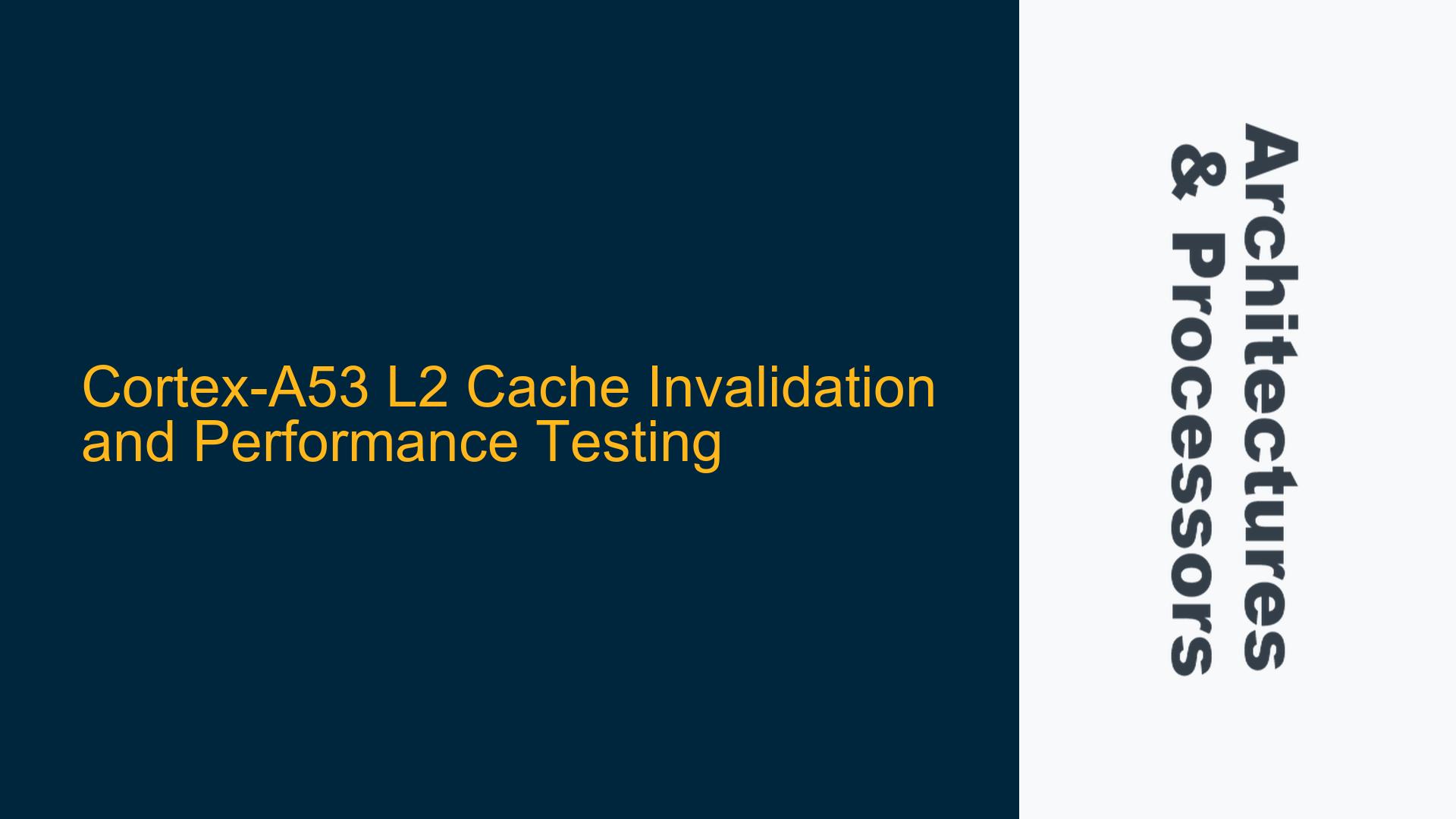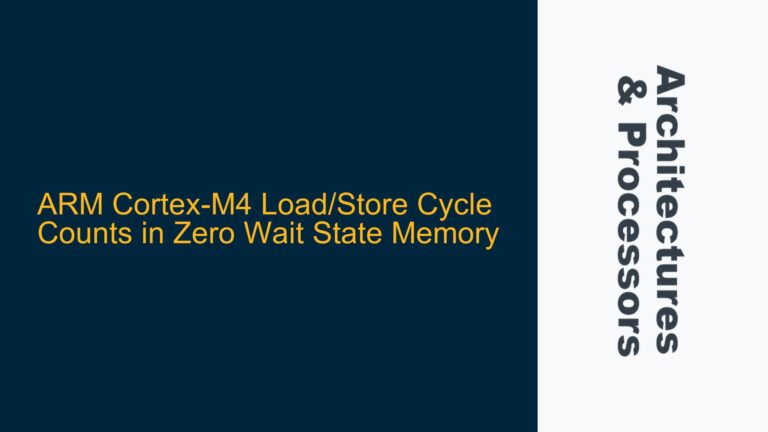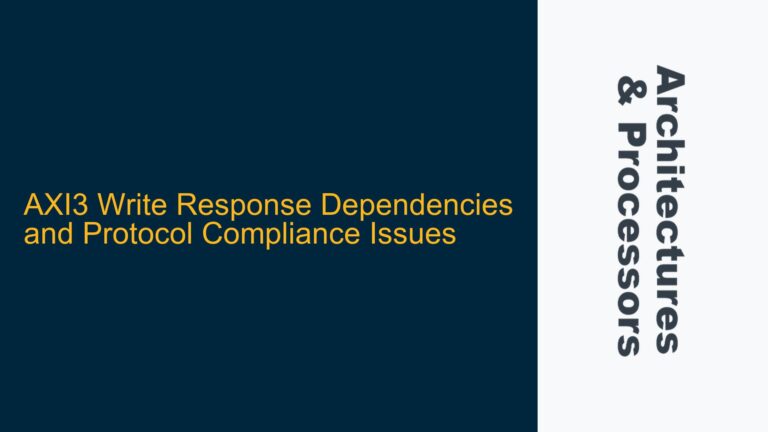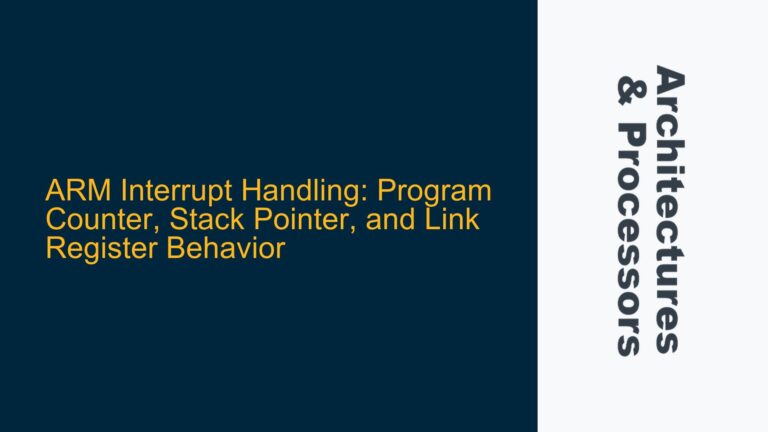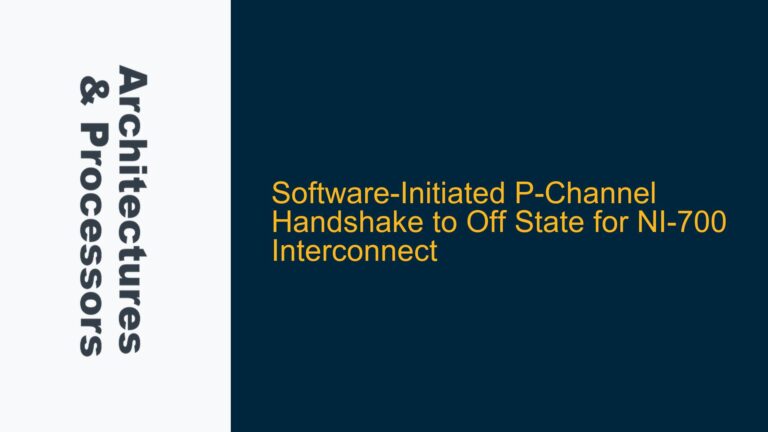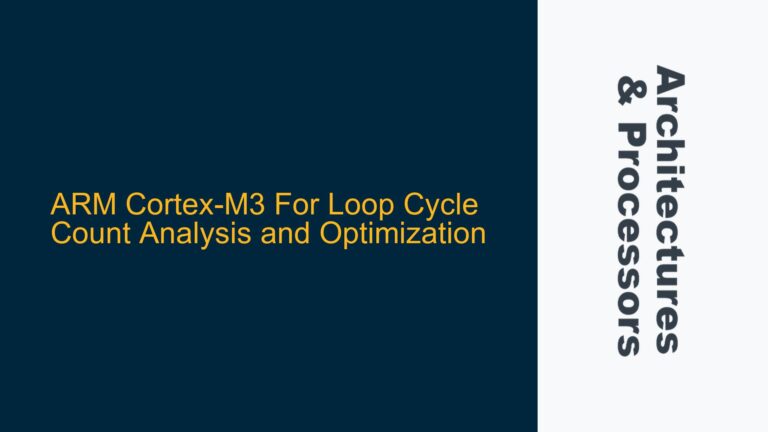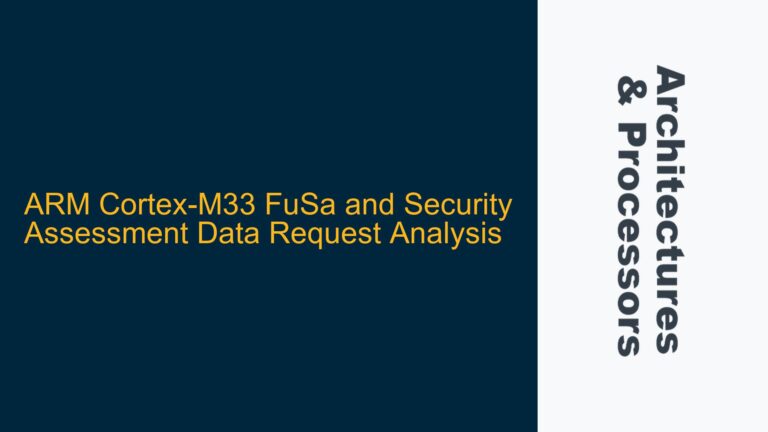Cortex-A53 L2 Cache Invalidation Mechanism
The Cortex-A53 processor, part of ARM’s Cortex-A series, is a widely used 64-bit ARMv8-A core that features a multi-level cache hierarchy, including L1 and L2 caches. The L1 cache is split into instruction (L1 I-cache) and data (L1 D-cache) caches, while the L2 cache is typically unified, meaning it stores both instructions and data. The L2 cache is shared among multiple cores in a multi-core configuration, making it a critical component for system performance.
In the context of cache management, invalidation refers to the process of marking cache lines as invalid, effectively removing their contents from the cache. This is often necessary when the contents of memory have been modified by an external agent (e.g., a DMA controller) or when the software needs to ensure that subsequent memory accesses fetch fresh data from main memory rather than potentially stale data from the cache.
The Cortex-A53 architecture provides mechanisms for invalidating the L1 caches through specific instructions such as IC IALLUIS (Invalidate all instruction caches to PoU, Inner Shareable) and DC IVAC (Invalidate data cache by virtual address to PoC). However, the L2 cache does not have a direct software-accessible invalidation mechanism. This is because the L2 cache is typically managed by the hardware, and its invalidation is often tied to the invalidation of the L1 caches.
When the L1 caches are invalidated, the L2 cache may or may not be affected, depending on the specific implementation and configuration of the Cortex-A53 core. In some cases, invalidating the L1 caches may cause the L2 cache to also be invalidated, while in other cases, the L2 cache may remain unchanged. This behavior is not explicitly documented in the ARM architecture reference manual, leading to confusion among developers who need to control cache behavior for performance testing or debugging purposes.
Memory Hierarchy and Cache Coherency in Cortex-A53
The Cortex-A53 processor implements a memory hierarchy that includes the L1 and L2 caches, as well as the main memory. The L1 caches are private to each core, while the L2 cache is typically shared among multiple cores. This shared L2 cache introduces additional complexity in terms of cache coherency, as multiple cores may be accessing the same memory locations simultaneously.
Cache coherency is maintained through the use of the ARMv8-A memory model, which includes mechanisms such as the Memory Barrier (MB) and Data Synchronization Barrier (DSB) instructions. These instructions ensure that memory operations are performed in the correct order and that cache coherency is maintained across multiple cores.
In the context of L2 cache invalidation, the lack of a direct software-accessible mechanism means that developers must rely on indirect methods to achieve the desired behavior. One such method is to invalidate the L1 caches, which may or may not result in the L2 cache being invalidated as well. This uncertainty can make it difficult to predict the behavior of the system, particularly in performance-critical applications where cache behavior can have a significant impact on overall system performance.
Another factor to consider is the role of the cache coherency protocol in maintaining consistency between the L1 and L2 caches. The Cortex-A53 implements the ACE (AXI Coherency Extensions) protocol, which allows for cache coherency to be maintained across multiple cores and caches. However, this protocol does not provide a direct mechanism for software to invalidate the L2 cache, further complicating the task of cache management.
Implementing L2 Cache Invalidation and Performance Testing
Given the lack of a direct software-accessible mechanism for invalidating the L2 cache in the Cortex-A53, developers must employ alternative methods to achieve the desired behavior. One approach is to use the IC IALLUIS and DC IVAC instructions to invalidate the L1 caches, and then observe the impact on the L2 cache. This can be done by measuring the performance of the system before and after the invalidation, and comparing the results to determine whether the L2 cache was affected.
To implement this approach, the following steps can be taken:
-
Measure Baseline Performance: Before invalidating the L1 caches, measure the baseline performance of the system using a suitable benchmark or performance monitoring tool. This will provide a reference point for comparing the performance after the invalidation.
-
Invalidate L1 Caches: Use the
IC IALLUISinstruction to invalidate the L1 instruction cache, and theDC IVACinstruction to invalidate the L1 data cache. These instructions should be followed by a Data Synchronization Barrier (DSB) instruction to ensure that the invalidation operations are completed before proceeding. -
Measure Post-Invalidation Performance: After invalidating the L1 caches, measure the performance of the system again using the same benchmark or performance monitoring tool. Compare the results to the baseline performance to determine whether the L2 cache was affected by the invalidation.
-
Analyze Results: If the performance degradation is significant, it may indicate that the L2 cache was also invalidated as a result of the L1 cache invalidation. If the performance remains largely unchanged, it may indicate that the L2 cache was not affected.
-
Repeat and Validate: To ensure the accuracy of the results, repeat the process multiple times and validate the findings. This will help to rule out any anomalies or external factors that may have influenced the performance measurements.
In addition to the above steps, developers can also use performance monitoring counters (PMCs) to gather more detailed information about cache behavior. The Cortex-A53 provides a set of PMCs that can be used to monitor cache hits, misses, and other relevant metrics. By analyzing these metrics, developers can gain a deeper understanding of how the L1 and L2 caches are behaving and whether the invalidation of the L1 caches has had the desired effect on the L2 cache.
Another approach to simulating L2 cache misses is to modify the memory access patterns of the application to force cache evictions. This can be done by accessing a large amount of data that exceeds the capacity of the L1 cache, thereby causing some of the data to be evicted from the L1 cache and potentially from the L2 cache as well. This approach can be combined with the use of PMCs to monitor the impact on cache behavior and performance.
In conclusion, while the Cortex-A53 does not provide a direct software-accessible mechanism for invalidating the L2 cache, developers can use indirect methods such as invalidating the L1 caches and modifying memory access patterns to achieve the desired behavior. By carefully measuring and analyzing the impact of these methods on system performance, developers can gain valuable insights into the behavior of the L2 cache and optimize their applications accordingly.
